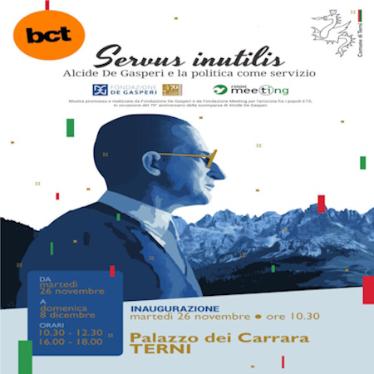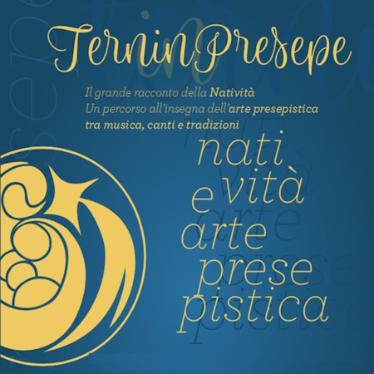Located in southeastern Umbria, Terni is spread over a large plain at the confluence of the Serra and Nera rivers, surrounded by a natural amphitheater of hills. In the latter half of the 19th century Terni was one of the first cities in Italy to take part in the industrial revolution, and thanks to the enormous amount of power provided by Marmore Falls, it earned the nickname of "Manchester of Italy."
HISTORY
Terni's origins are very ancient, and the area became an important Roman municipium called Interamna Nahartium ("land between two rivers," the Nera and the Serra), as can be seen from the remains of the Fausto Amphitheater: it was also the birthplace of the emperor Marcus Claudius Tacitus and the historian Cornelius Tacitus. It enjoyed a period of peace and prosperity under the Romans, who drained large sections of marshland and greatly developed agriculture in the area.
Christianity was brought to Terni by its bishop and patron saint, Valentine; in the 6th century the town was attacked and destroyed by the Goths and the Byzantines, followed by the Lombards (755 AD), who added Terni to the Duchy of Spoleto.
In 1159 it was subjugated and destroyed by Frederick Barbarossa and rebuilt soon after. It came within the orbit of the papacy and the empire several times, and after centuries of struggles between factions and wars with nearby cities and outside seigniories, in 1420 it became part of the Papal States, under whose rule it remained (except for the Napoleonic period) until 1860.
ART, CULTURE, ENVIRONMENT
The city's layout and architectural style is mainly modern and dynamic, mostly the result of reconstruction in the 1950s following the heavy bombing it suffered in World War II.
Today Terni shows visitors a decidedly modern face, although many traces of the past can still be seen, such as the ruins of the Fausto Amphitheater, a classic Roman circus where theater performances were held. Sections of its walls are still visible.
Religious buildings of interest include, among others, the Church of San Francesco (13th-century), with a fine bell tower by Angelo da Orvieto, Gothic mullioned windows, and the beautiful Paradisi Chapel; the Cathedral, originally erected in the 6th century and rebuilt in the 17th century to a design by Bernini; the old Church of Sant'Alò, a small Romanesque jewel; San Salvatore, probably built over a previous Roman temple of the sun; San Lorenzo and the Church of San Pietro, with an interesting apse and cloister.
There are many excellent palazzi, such as Palazzo Spada, the town hall, built in the mid-1550s by Count Michelangelo Spada to a plan by Antonio Sangallo the Younger; the medieval Palazzo Mazzancolli, home of the Terni State Archives; the 18th-century Palazzo Gazzoli, which formerly housed the Orneore Metelli Municipal Picture Gallery (with valuable works such as the Franciscan altarpiece by Piermatteo d'Amelia; the collection is now a few blocks away in the CAOS complex) and the Aurelio De Felice Museum; Palazzo Morelli (16th century); and Palazzo Bianchini-Riccardi (16th century).
The industrial archeology sites and monuments provide an occasion for an unusual and interesting visit among abandoned factories and plants that are now undergoing extensive restoration. Of interest in particular are the Great Maul, a giant hydraulic press used for working steel and now standing in front of the train station, and the Papigno plant, which has been converted into film studios.
Terni is also interesting for its modern art and architecture: Piazza Tacito with its magnificent fountain, Corso del Popolo and Largo Villa Glori were all designed by the architects Mario Ridolfi and Mario Fagiolo, and the sculptor Arnaldo Pomodoro created Lance of Light, a gigantic, triangular-based obelisk made from 105 tons of steel.
One building definitely worthy of a visit in Terni is the Basilica of San Valentino, which holds the body of St. Valentine, patron saint of lovers, who was bishop of Terni and martyred in the 3rd century AD.
Essential stops nearby are Marmore Falls, the highest in Europe, and Lake Piediluco, lying amid ilex-covered hills at the border with Lazio, an ideal place for sailing, canoeing and water-skiing enthusiasts. A typical fishermen's village of colorful houses stretches out along its shore, and rising out of the lake is a conical mountain known as the Montagna dell'Eco (Echo Mountain) because of the incredible sentence-long echoes that can be heard there. The Recentino and San Liberatore wetlands are small oases frequented by flocks of migratory birds, an ideal ecosystem for flora and fauna.
Worthy of a visit in the immediate vicinity is the Carsulae archeological area, site of a Roman municipium along the ancient Flaminian Way. Excavations and research have made it possible to uncover a large part of the Forum, with the remains of a basilica and two twin temples, the Theater and Amphitheater and the superb Arch of San Damiano, beyond which are interesting burial monuments. The handsome medieval Church of San Damiano, built from materials taken from the ruins, stands next to the forum.


































